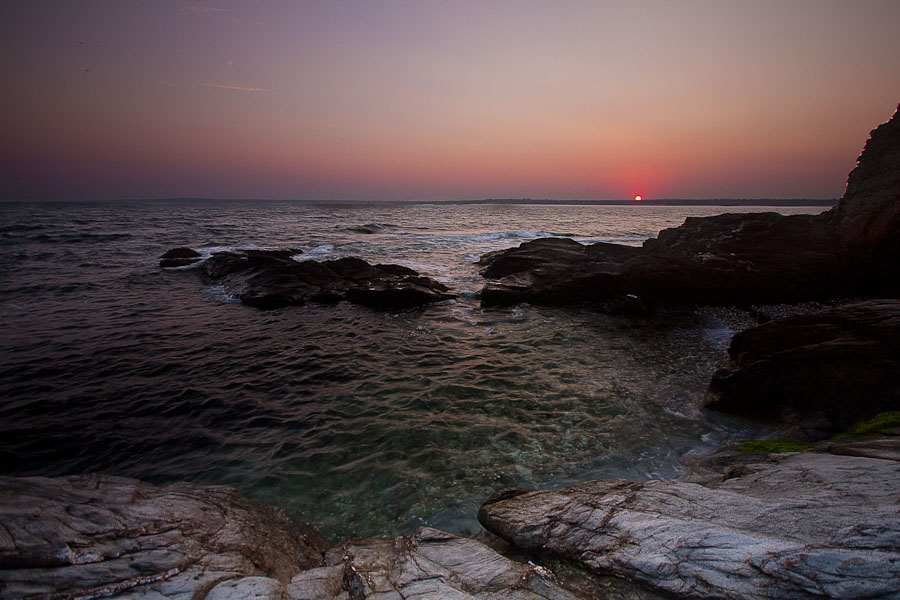Seascape Photography on a Hot Summer Night Along Narragansett Bay
Narragansett Bay is the visual centerpiece of the state of Rhode Island, and with over 256 miles of coastline it is the subject of the majority of my fine art seascape photography. From sandy beaches to rocky coasts, Narragansett Bay provides a very diverse number of locations to practice my photography.
Often times when we are out shooting we create dozens, or even hundreds of photographs at an single location. Exploring different artistic compositions we strive to create that single photograph that tells the story we are witnessing, so that we can share that story with others. We will rush home, upload our photographs and process one or two favorites and then move on to the next event, leaving all the rest of those photographs untouched.
One of my favorite pastimes is to sit down at the computer and look through all of my old photographs, looking for something special. Often times I run across a real gem of photograph, and I have no idea how I originally missed it. Sometimes I will find a photograph that would be perfect for a new processing technique I have learned.
As I went through this very exercise the other day, I came across a set of seascape photographs that I thought would be perfect for a new processing technique that I have been working on. As I looked at the photograph, my mind traveled back to a hot August afternoon and a trip to Conanicut Island, smack dab in the middle of Narragansett Bay. I had two goals that afternoon – to find a cool ocean breeze, and to take some photographs of the light house at Beavertail State Park. It turned out that I was far from alone in this idea, as when I arrived I found the rocks covered with people taking in the cool ocean, and watching the sunset.
Hopes of getting some photographs of the lighthouse went right out the window, so instead I focused on trying some seascape photography of the sunset over Narragansett Bay. It is not uncommon for my photography plans to change, so I try to be as flexible as possible. It is often far better to change your plans and work with what the world is giving you then to fight it.
When I originally photographed this scene, I had HDR in mind so I had 5 RAW photographs to work with – one at the “normal” exposure, and then 2 overexposed and 2 underexposed photographs. Instead of processing the 5 photographs with HDR software I decided to take two of the images and blend them together. I used the normal exposure for the water and the rocks, and then I used the 1 stop underexposed photo for the sky. Using the underexposed photo for the sky helped me to keep the sunset from looking like a big white blob in the middle of the sky, and it also helps to really saturate the colors in the sky. The pinks, reds and magenta’s really have a rich, saturated feel to them with very little digital enhancement. A little bit of dodging and burning on the rocks and the white caps in the water and I was happy with the overall mood of the photograph.
I would be very interested to hear what you think!

